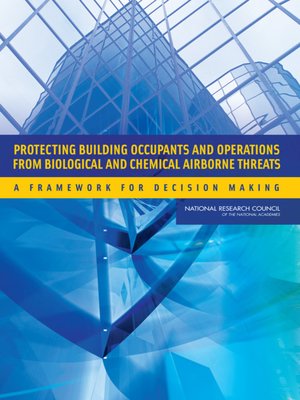Protecting Building Occupants and Operations from Biological and Chemical Airborne Threats
ebook ∣ A Framework for Decision Making
By National Research Council

Sign up to save your library
With an OverDrive account, you can save your favorite libraries for at-a-glance information about availability. Find out more about OverDrive accounts.
Find this title in Libby, the library reading app by OverDrive.



Search for a digital library with this title
Title found at these libraries:
| Library Name | Distance |
|---|---|
| Loading... |
Protecting buildings and their occupants from biological and chemical attacks to ensure continuous building operations is seen as an urgent need in the Department of Defense, given recent technological advances and the changing threats. Toward this end, the Department of Defense established the Immune Building Program to develop protective systems to deter biological and chemical attacks on military facilities and minimize the impacts of attacks should they occur. At the request of the Defense Threat Reduction Agency, the National Research Council convened a committee to provide guiding principles for protecting buildings from airborne biological or chemical threat agents and outline the variables and options to consider in designing building protection systems. This report addresses such components of building protection as building design and planning strategies; heating, ventilating, and air-conditioning systems; filtration; threat detection and identification technologies; and operational responses. It recommends that building protection systems be designed to accommodate changing building conditions, new technologies, and emerging threats. Although the report's focus is on protection of military facilities, the guiding principles it offers are applicable to protection of public facilities as well.







